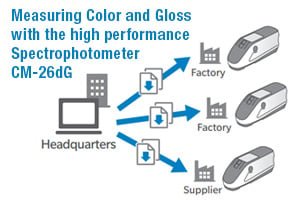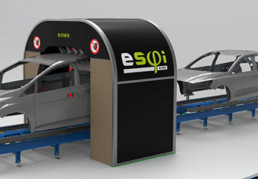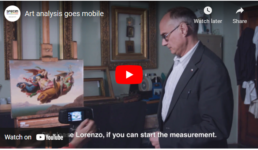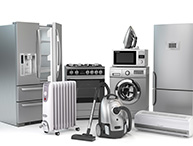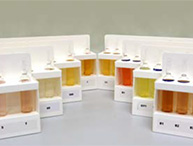October 2022
|
||||||||||||||||||||||||||||||||||||||||||||||||||||||||||||||||||||||||||||||||||||||||||||||||||||||||||||||||||||||||||||||||||||||||||||||||||||||||||||||||||||||||||||||||||||||||||||||||||||||||||||||||||||||||||||||||||||||||||||||||||||||||||||||||||||||||||||||||||||||||||||||||||||||||||||||||||||||||||||||||||||||||||||||||||||||||||||||||||||||||||||||||||||||||||||||||||||||||||||||||||||||||||||||||||||||||||||||||||||||||||||||||||||||||||||||||||||||||||||||||||||||||||||||||||||||||||||||||||||||||||||||||||||||||||||||||||||||||||||||||||||||||||||||||||||||||||||||||||||||||||||||||||||||||||||||||||||||||||||||||||||||||||||||||||||||||||||||||||||||||||||||||||||||||||||||||||||||||||||||||||||||||||||||||||||||||||||||||||||||||||||||||||||||||||||||||||||||||||||||||||||||||||||||||||||||||||||||||||||||||
September 2022
|
||||||||||||||||||||||||||||||||||||||||||||||||||||||||||||||||||||||||||||||||||||||||||||||||||||||||||||||||||||||||||||||||||||||||||||||||||||||||||||||||||||||||||||||||||||||||||||||||||||||||||||||||||||||||||||||||||||||||||||||||||||||||||||||||||||||||||||||||||||||||||||||||||||||||||||||||||||||||||||||||||||||||||||||||||||||||||||||||||||||||||||||||||||||||||||||||||||||||||||||||||||||||||||||||||||||||||||||||||||||||||||||||||||||||||||||||||||||||||||||||||||||||||||||||||||||||||||||||||||||||||||||||||||||||||||||||||||||||||||||||||||||||||||||||||||||||||||||||||||||||||||||||||||||||||||||||||||||||||||||||||||||||||||||||||||||||||||||||||||||||||||||||||||||||||||||||||||||||||||||||||||||||||||||||||||||||||||||||||||||||||||||||||||||||||||||||||||||||||||||||||||||||||||||||||||||||||||||||||||||||
Does your new Electric Vehicle make annoying sounds?
According to a recent JD Power survey, one of the top complaints that new EV car owners commented on was the noise from either the road or the wind generated when driving their new EVs'. Much of the annoying noises come from pothole-filled roadways, aggressive tire treads humming, and poor fit and finish from misaligned car body parts. Known as cabin noise, many manufacturers publish the cabin noise in decibels (dB), typically stated in the range of 60-90 dB are the acceptable level of cabin noise. The problem is most of the measurements are taken under controlled conditions yielding the best possible results that do not reflect the road conditions or other environmental situations encountered in everyday driving.
Automakers constantly challenge design teams to reduce noise, known in the industry as "NVH"; noise, vibration, and harshness. With traditional ICEs (internal combustion engines), the engine generates a certain amount of noise during its operation. Some models have exhausts designed to accentuate the engine's roar, thus increasing cabin noise. With today's EV, engine noise is non-existent. However, this makes the reduction of NVH even more crucial, so the driver doesn't hear all the environmental noises, such as wet road surfaces, wind whistles, and vehicle rattles. Remember that rattles occur in many cars due to use conditions, loose fasteners (consisting of clips, screws, bolts, rubber grommets, etc.), and poorly fitting body panels. Design and manufacturing teams cannot control operator driving conditions; however, they can control the torque settings of fasteners and the alignment of body panels.
The measurement of body panels is known as the Flush and Gap metrology methodology taken during vehicle manufacturing. Each vehicle assembled is measured against the design parameters set forth by the design teams. Generally, most gaps (door to door, door to fender, fender to hood, headlamp to hood, windshield to roof, etc.) are 1.25mm to 2mm in size, holding a tolerance of +/-0.3mm, and flushness is the measurement of how the surfaces of the panels align with one another. Ideally, alignment is 0mm. When a vehicle is assembled with wide gaps or out-of-alignment panels, it's subject to improperly tightened or missed fasteners, spacers, or deficient critical spot welds. Misassembled vehicles can cause automakers warranty issues and poor customer reviews. One solution to these manufacturing issues is the Eines Eifis® Flush N Gap measurement system. The Eines Eifis® Flush N Gap measurement tunnel provides hundreds of points of accurate measurement on assembled or semi-assembled vehicles. This critical measurement system scans while the vehicle moves without touching the surface. Additionally, the system guides the fitters in the auto plant to the exact location to make necessary adjustments or alignments.
In the age of world-class manufacturing, does your quality depart measure 100% of all assembled vehicles? Many of the plants I enter currently measure a sampling of vehicles manually, leaving it to chance that the unmeasured vehicles meet manufacturer specifications.
Want to learn more about reducing NVH and measuring 100% of all vehicles manufactured, contact us for a quick discussion.
Precise Color Communication
An infinite number of colors surround us in our everyday lives. Not only does color influence our tastes in food and other purchases, the color of a person’s face can also tell us about that person’s health. Our knowledge of color and its control is often insufficient, leading to a variety of problems in deciding product color. Since judgment is often performed according to a person’s impression or experience, it is impossible for everyone to visually control color accurately using common, uniform standards. This document describes important and useful information about colors.
August 2022
|
||||||||||||||||||||||||||||||||||||||||||||||||||||||||||||||||||||||||||||||||||||||||||||||||||||||||||||||||||||||||||||||||||||||||||||||||||||||||||||||||||||||||||||||||||||||||||||||||||||||||||||||||||||||||||||||||||||||||||||||||||||||||||||||||||||||||||||||||||||||||||||||||||||||||||||||||||||||||||||||||||||||||||||||||||||||||||||||||||||||||||||||||||||||||||||||||||||||||||||||||||||||||||||||||||||||||||||||||||||||||||||||||||||||||||||||||||||||||||||||||||||||||||||||||||||||||||||||||||||||||||||||||||||||||||||||||||||||||||||||||||||||||||||||||||||||||||||||||||||||||||||||||||||||||||||||||||||||||||||||||||||||||||||||||||||||||||||||||||||||||||||||||||||||||||||||||||||||||||||||||||||||||||||||||||||||||||||||||||||||||||||||||||||||||||||||||||||||||||||||||||||||||||||||||||||||||||||||||||||||||
Artificial Intelligence Controls Automotive 4.0 Inspections
Advanced artificial intelligence, data analytics, robotics, and smart manufacturing are digitally transforming all of today’s manufacturing landscape. At this hi-tech stage industries such as automotive, agriculture, aerospace, and customized production are changing in exciting ways, employing superior tools to attain high-resolution measurement scanning to precise robotic laser welding systems. Engineers design applications to drive AI as a data analytic tool to create correlations designed to make predictions based on agile machine-learning algorithms.
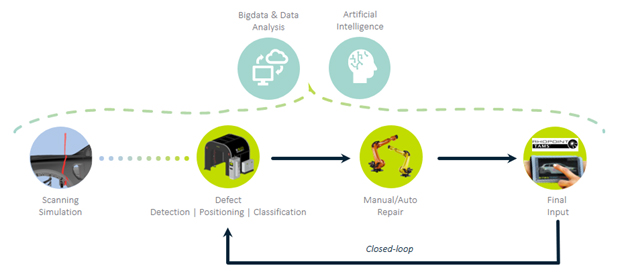
Eines Vision Systems – Digital AI in automotive paint operations
The impact of AI is enormous to manufacturing. Only recently has the technology truly caught up with the promises. The bottleneck now is having the processing power and micro-controllers necessary to run complex AI algorithms efficiently and quickly. Whether it’s the measurement of automotive fit n finish, surface integrity, or color this new set of Big-Data can now be held inexpensively in cloud storage so much that computation engines are embedded to run the machine learning analysis.
In modern-day inspections, 3D modeling and computational analysis within an AI/ML intelligent system do the laborious scanning to identify vision camera images with nonconformance issues that flags out of specification data for more attention to downstream automation or repair personnel. For example, AI can measure scratches, dents, pinholes, and orange peel more accurately and consistently than most manual labor processes. One automotive manager commented, “The old way was labor-intensive with highly skilled technicians to achieve subjective results. Vision AI makes the results objective with a higher degree of accuracy.”
One key attribute of using vision AI within automated inspection systems is that it does a great job recognizing patterns and can process thousands of images in milliseconds. Within the Eines Flush n Gap system, the programs look at the results of measured sections more accurately than manual inspections. The digital vision AI programmed inspection systems maintain consistent performance whereby operators become fatigued and bored of examining thousands of dimensional outputs. Powerful data can not only be harnessed for machine learning of part specifications but also simultaneously computes with parallel algorithms for process specifications, performed to accelerate efforts to develop robust root-cause analysis controls leading to alternative improvements in upstream processes.
Poorly training or untrained AI algorithms is one limitation of AI-controlled automation enabled systems, thus resulting in machine learning data processed inaccurately. Impacts on outputs can hamper the ROI case for sophisticated customized-data-driven automation systems. In all new vision system installations, I make it a point to correlate the data with highly skilled programmers and back-test the results to the specifications to ensure the data analytics are robust and cost-effective.
Data analytics can uncover patterns of nonconformance as small as tenths of a millimeter and material degradation in automotive production, beginning with stamped parts through the body shop, paint shop, and final assembly. Wide use of AI in EV assembly is not just for the actual battery builds but also for the battery to carriage assembly. Formal traceability of sequence of operations, part presence, testing measurements, and overall takt time lead to comprehensive big-data accessed by engineers to validate a mistake-proof process. Automated inspection systems vary in price from low thousands of dollar applications to elaborate tens of millions of dollars. It is best to work with an experienced vendor capable of assessing the application and crafting a solution suitable for the needs.
Wide use of AI adoption in automated vision systems has rapidly been employed in hard inspect operations that once were yielding inconsistent and unreliable results. This use decreases labor costs, improves data analytics, and allows the production line to operate continuously without impacting overall operational throughput. Machine Vision detection and measurement are found not only on robotic systems but also in Moving Line Tunnel-Style applications, such as Eines ESFI® Paint Scanner and EIFIS® Gap N Flush Measurement.
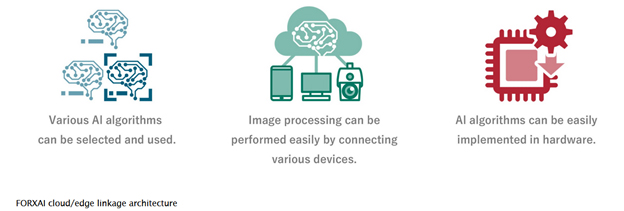
Do you have an application needing an assessment or need ROI assistance? Please inquire about this on the contact page of this website to get more information on the prospects of using AI in automated machine vision quality inspection processes or to problem solve by developing an AI program using cutting-edge imaging IoT technology provided by Konica Minolta’s FORXAI®.
Behind the scenes scanning works of art
Preservation of cultural legacies like paintings, manuscripts, maps, and old photos through documenting and transforming in to digital formats for archives, research, and conservation or for display is increasingly important. Museum laboratories and university researchers are using a wider range of analytical instruments to study collections. There is need to study, materials like pigments, dyes, and binding media not only to observe possible degradation or changes due to age or environmental conditions, but also for to reveal the artist’s painting technique and methods used in creating the work of art.
Hyperspectral imaging (HSI) is gaining wide acceptance as a valuable optical tool for art archiving and restoration. HSI is an optical instrument used to measure the reflectance or transmittance of light by materials and the present the results in the form of spectral curves. HSI’s non-invasive and non-destructive imaging technique is safe for even the most fragile samples. Used remotely to scan all parts of the sample with high spatial resolution (down to 15-µm pixel size). HSI records both spatial and spectral information, for use in classifying chemical, physical and/or biological properties of the object.
In visible range, it gives improved precision in color measurement for recording pigment color-change, which is essential for conservation. In near infrared HSI can reveal information hidden behind the outer layer or written text that has deteriorated and faded under environmental conditions. Besides, fluorescence investigation are prone to highlight different solvent and binders.
Specim provides instrumentation for different spectral regions. Each spectral camera enables the user to emphasize different properties of the sample. Our art scanner can be equipped with VIS, VNIR, NIR or SWIR camera.
Success story: Composition by Henryk Stazewski, 1957, oil
For her doctoral thesis, Agata Warszewska-Kolodziej studied the oil painting “Composition” by the famous Avant-garde Polish painter Henryk Stazewski. An earlier X-ray scan showed that behind the visible painting a sketch or earlier painting existed. When measured using Specim’s spectral scanning instrument for SWIR region the painting revealed far more information on the underlying work. “We were able to exactly determine how the painted over composition looked like” says Agata.
Art analysis goes mobile
Analyzing and conserving art with the help of Specim IQ, the first portable hyperspectral imaging system. Marcello Picollo, Researcher from Nello Carrara, IFAC-CNR shows how it’s done using the Specim IQ.
Advanced Color and appearance control of electrical goods
We surround ourselves with electrical goods. We refer to large household appliances as white goods since, traditionally, most appliances have a white enamel finish. Black goods refer to TVs, cameras, and audio devices. Today, white and black predominance has given way to colorful and more sophisticated finishes. While classic colors like white and black continue to attract the most attention, newer shades created by metallic and stainless steel and chrome are gaining popularity. Combining shades with different textures such as high gloss or matt finishes add a hint of drama to a product’s aesthetic. Learn how to control these colors in our white paper.
Pharmaceutical Liquid Color Testing with a Spectrophotometer
The improvements made over the years to measuring liquid color have elevated visual-based methods to a markedly greater reliability level thanks to today’s advanced color measurement process. Where once an array of physical samples had to be prepared manually with differing levels of dilution and then compared against a set of standards via the human visual system, today’s spectrophotometers take the guesswork–and tedious preparation–out of the equation.



.jpg?upscale=true&width=600&upscale=true&name=como-usan-los-fabricantes-de-plasticos-los-espectrofotometros-de-mesa-en-el-control-de-calidad%20(002).jpg)
/Youtube%20Button/300x200px_CM-36dG_Video_1.jpg?upscale=true&width=600&upscale=true&name=300x200px_CM-36dG_Video_1.jpg)
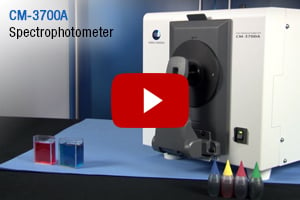
/300x200px_CM-3700A.jpg?upscale=true&width=600&upscale=true&name=300x200px_CM-3700A.jpg)
/300x200_CM-36dG.jpg?upscale=true&width=600&upscale=true&name=300x200_CM-36dG.jpg)

/300x200px-Blog_Ceramic.jpg?upscale=true&width=600&upscale=true&name=300x200px-Blog_Ceramic.jpg)
/300x200px_CM-5.jpg?upscale=true&width=600&upscale=true&name=300x200px_CM-5.jpg)
/CM-700d_300x200px.jpg?upscale=true&width=600&upscale=true&name=CM-700d_300x200px.jpg)
/Youtube%20Button/300x200px_CM-5-YouTube.jpg?upscale=true&width=600&upscale=true&name=300x200px_CM-5-YouTube.jpg)
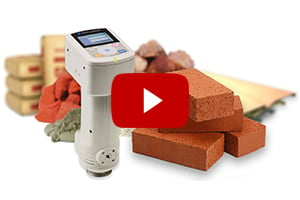
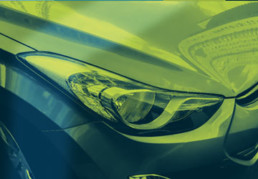
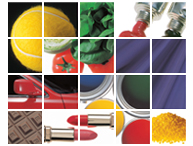



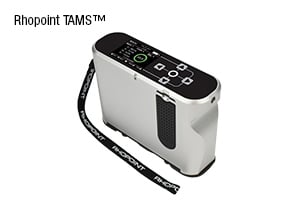
/300x200px_CM-M6-1.jpg?width=600&upscale=true&name=300x200px_CM-M6-1.jpg)
/300x200px_CM-M6.jpg?width=600&upscale=true&name=300x200px_CM-M6.jpg)
